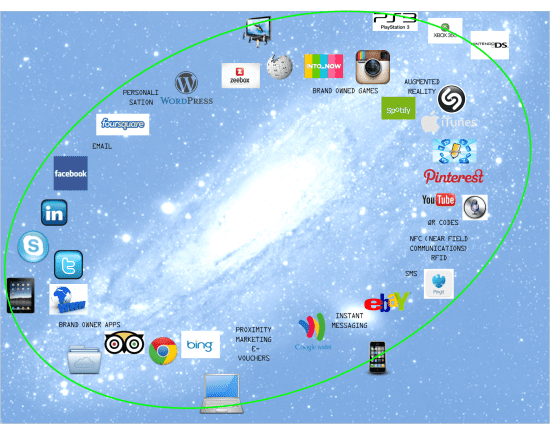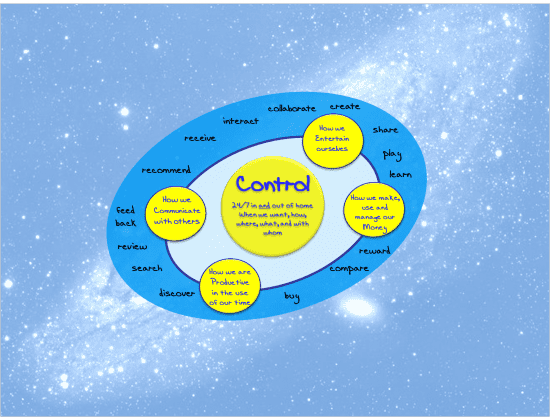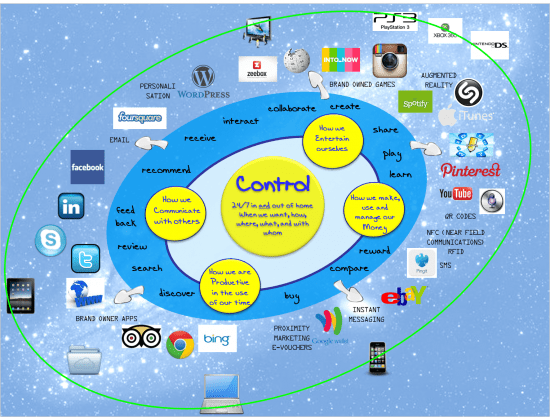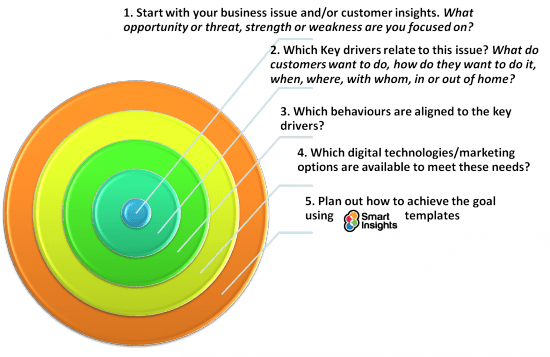Harnessing the 4 key drivers of customer control
The overwhelming choice of apps, websites and other digital platforms that customers have at their finger tips through multiple devices creates a swirling galaxy for brand owners to navigate and understand when looking to build customer relationships.
Brands need to take advantage of and be part of this technological 'galaxy of delights', as more and more time is spent by customers on electronic devices and the penetration and usage of tablets and smart phones continues apace. Since customers will interact with brands across this range of platforms, it's important to remember the context within a wider customer journey and develop integrated propositions.

But how do you make sense of all of this as a marketer? In this post I will explain a framework on how to approach different technology platforms to create advantage and deliver better customer experiences.
The customer is in control
Recognise that the customer is at the centre of this universe not the technology. The customer’s need is CONTROL. Technology is allowing customers to be more and more in control of what they want to do, how they want to do it, when and where, with whom, in and out of home. Sky’s latest advertising reflects this – it focuses on control front and centre. If you do not react your brand could be left behind!
Four key drivers of customer control
Primarily, this CONTROL supports FOUR KEY DRIVERS:
- Entertainment. Seeking and receiving.
- Money. Making money, managing or using it.
- Time. Making best use of time.
- Communication. Inbound and outbound.

Secondary drivers or needs.
In many cases the technologies link to secondary drivers or needs. Customers use these technologies to recommend, feedback, review, search, discover, compare, reward, learn, play, share, create, collaborate, interact and receive, thus fuelling the FOUR key drivers as a result.
Great examples of developing propositions to support the 4 key drivers
- Theme parks have embraced technology to improve visitor experience. Customers want to maximise the TIME they have in the park to get the most for their MONEY and thereby increase the opportunity to be ENTERTAINED. The solution was to create downloadable apps that provide the latest park and queuing information.
- A charity needed to increase awareness and donations in a cluttered market. It needed to make it easy for customers to donate thus saving customers TIME whilst allowing them to spend their MONEY. The solution was to use SMS as a means to donate.
- Tablets and mobiles interact with TVs to provide another layer of information and interaction thus improving the overall ENTERTAINMENT experience.
- NailSnaps is about to launch through Kickstarter funding. It is developing an app that will allow customers to create pictures that they want to appear on their nails. This taps into one of the secondary needs, in this case creation and puts the customer in control.
With the customer at the centre the universe looks like this…

…which means digital strategy should start from the inside out then connect with planning best practice to develop differentiated messaging, service and product propositions

Finally
It is also worth remembering that whilst our real life galaxy has remained relatively static for millions of years this galaxy is ever changing. Gravitational pulls exist in the form of new apps, platforms, partnerships, innovations and acquisitions. The context is ever changing but customers’ need for control is a constant.
Thank to Peter Shreeve for sharing his thoughts and opinions in this blog post. Peter is an independent research consultant. He is currently leading the market research function at the Open University. His approach to understanding the enquirer journey have strongly influenced the shape of the new enquirer website (launched April 2014). His experience spans multiple research topics across a broad range of methodologies and sectors. He is also a part-time lecturer and tutor on CIM Marketing courses for the University of Buckingham and Oxford College of Marketing. Above all he is passionate about ensuring the customer is front and centre when brands develop new processes, products and messaging. He has written articles that have appeared on www.research-live.com, www.hrmagazine.co.uk, Argent magazine and ESOMAR. He can be contacted on
LinkedIn and
Twitter, and also on his
blog.










